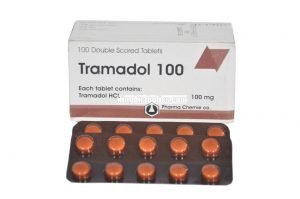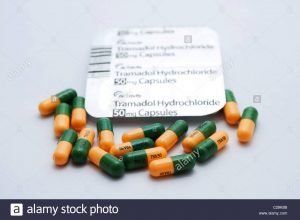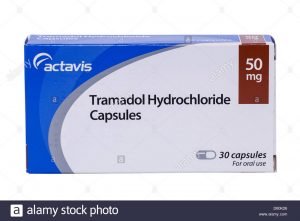Tramadol Abuse: 10 Risky Side Effects
The abuse of Tramadol, popularly known as Tramol has become a headache in some parts of the globe with Ghana inclusive. The drug is so far one of the most abused in the world. In Ghana, the youths have resulted to the unprescriptive intake of this drug for various purposes. Some claim they take it to enhance and prolong sexual performances. Others do take it to remain ‘sharp’ as they put it.
However, the abuse of this drug has dire consequences not only on the individual taking it but on the society as a whole. Most of the youths after abusing the drug turn to be violent and can harm or even kill anyone around them without knowing it since the drug has an effect on a person’s mental health.
For the individual, the side effects are just too many and we bring you ten of them. But before then, let’s find out some vital things about this drug.
What is Tramadol?
It is available by prescription only and comes in tablet, capsule and liquid drops that you swallow.
It works by stopping pain signals from travelling along the nerves to the brain to ease any discomfort a person might be feeling.
Tramadol is quite often given to patients who might be in pain after major surgery or to people who have long-term conditions such as arthritis.
In addition to reducing feelings of pain, opioids slow down respiration and breathing to help you relax. But taking too-high doses of opioids like tramadol can slow down breathing to the point you stop breathing completely and suffer an overdose. Taking tramadol as directed is crucial to preventing an overdose and other adverse symptoms that can occur when misusing or abusing this drug.
Here are 10 risky side effects of tramadol. If you or a loved one is suffering from tramadol dependence, don’t hesitate to seek help right away, since continued tramadol use can lead to serious health problems, including death.
1. Seizures
Seizures are a common side effect of tramadol use, though the risk goes up significantly for those who use this drug in high amounts, or with alcohol, illicit drugs, antipsychotics, and antidepressants. It happens when changes occur in the brain due to electrical disturbances and are thought to be common with tramadol use since the drug increases the brain’s levels of serotonin and norepinephrine. When tramadol is combined with other substances, the risk for seizures is higher due to the way all these different chemicals interact with the brain.
2. Serotonin Syndrome
Serotonin syndrome is a group of symptoms that occur when the brain is exposed to high levels of serotonin, such as that caused by drugs and medications that spike serotonin levels. Studies have shown that using tramadol on its own can cause serotonin syndrome, though the risk increases among those who also use antidepressants, and illicit drugs such as cocaine, MDMA, and LSD. Common symptoms of serotonin syndrome include tremors, confusion, and muscle spasms.
3. Swelling under the Skin
Tramadol use can cause a condition known as angioedema, or swelling under the skin. Though rare, angioedema can happen to anyone who experiences a severe allergic reaction to tramadol. One study found that tramadol can even cause massive swelling of the tongue and protrusion of the tongue through the mouth, along with swollen vocal cords.
4. Insomnia
As one of the most common side effects of tramadol, insomnia poses a number of serious risks that can compromise your overall health and livelihood. Insomnia increases your risk for accidents, impairs your judgement, and doubles your risk for death from heart disease. Lack of sleep also disrupts your natural hormonal balance, and increases the risk for depression, cardiac events, diabetes, and cancer. Research has even found that going without sleep for 24 hours produces effects similar to that caused by having a blood alcohol concentration level of 0.1%.
5. Allergic Reaction (Anaphylaxis)
Some people who use tramadol may experience a life-threatening allergic reaction to the drug known as anaphylaxis, which can occur as quickly as a few minutes after use. Hives, swelling, rash, difficulty breathing, and shock are common symptoms of anaphylaxis, though symptoms of nausea, vomiting, and fainting may also occur. Seek medical help immediately if you or your loved one suffers an instant allergic reaction after using tramadol.
6. Suicidal Thoughts
People who have a history of suicidal attempts and addiction are at far greater risk for suicide when using tramadol. In 2010 the FDA added a warning to all tramadol products advising doctors and patients about the risk of suicide when using tramadol. This warning was issued after the number of tramadol-related deaths increased in those with histories of drug use disorders and suicidal ideation.
7. Dependence and Addiction
Along with all other opioids, dependence and addiction are one of the more serious tramadol side effects. Those who use high doses of tramadol can become tolerant to the medication, and require higher doses to achieve the drug’s effects. This can cause the body to become physically dependent on tramadol, which in turn, increases the risk for addiction. A person who becomes dependent on tramadol will experience a set of withdrawal symptoms when reducing their doses, or when attempting to quit the drug cold turkey.
8. Withdrawal
Those who stop using tramadol abruptly or who lower their usual dosage amount will experience a set of tramadol withdrawal symptoms within 12 hours of the last dose. The DEA reports that 90% of tramadol users will experience traditional opioid withdrawal symptoms, while the remaining 10% may also experience symptoms associated with reduced levels of serotonin and norepinephrine.
Common opioid withdrawal symptoms include:
- A runny nose
- Tearing eyes
- Sweating
- Muscle and body aches
- Abdominal pain and cramping
- Diarrhea
- Nausea and vomiting
- Insomnia
- Hypertension
- Rapid heart rate
- Agitation
- Irritability
- Problems with memory and concentration
- Anxiety
- Depression
- Drug cravings
Additional withdrawal symptoms associated strictly with tramadol use include:
- Tingling and numbness in limbs
- Confusion
- Panic attacks
- Extreme paranoia
- Hallucinations
9. Overdose
Using too much tramadol or using the drug in ways other than directed can cause a fatal overdose. Those who use tramadol with other substances are also at high risk for an overdose. Opioid overdoses can often be reversed with an opioid overdose reversal drug called naloxone, but sometimes, naloxone can fail to revive tramadol overdose victims due to the way this drug differs in chemical makeup from all other opioids.
A tramadol overdose can lead to a coma or death. Contact emergency services immediately if you or someone you love exhibits the following symptoms after using tramadol:
- Slowed or stopped breathing
- Irregular heart rate
- Constricted pupils
- Rigid muscles
- Muscle pain
- Vomiting
- Pale, clammy skin
- Hyperthermia
- Bluish tint to nails and lips
- Seizure
- Loss of consciousness
10. Other serious side effects
The above 9 tramadol side effects and symptoms may be some of the most risky for users; however, other side effects may still occur. Cognitive decline, digestive problems, fever, and overactive reflexes are other serious tramadol effects that can result from continued tramadol use.
Source: https://www.addictions.com/blog/9-risky-tramadol-side-effects-and-symptoms/





